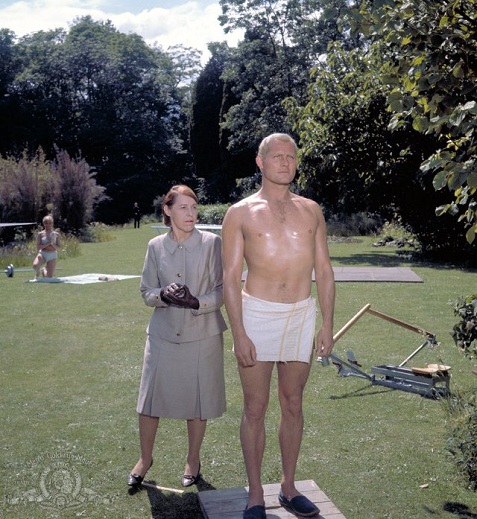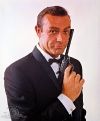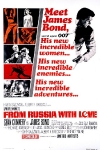007 One by One – From Russia with Love
We continue our look at the film adventures of the world’s most beloved killer spy with the James Bond flick many critics and fans consider the best in the series, based on Ian Fleming’s most acclaimed spy novel.
“From Russia with Love” (1963)
The Plot
After the death of their operative, Dr. No, SPECTRE is one rather peeved diabolical organization bent on world domination. Also, they could use some cash. The villains’ collective therefore devises a plan to steal a hugely prized Lektor decoding device from the Soviets by using the superspy responsible for No’s demise as a pawn. Endgame: Sell the device for a huge sum and kill James Bond. The bait will be the defection, with the Lektor, of a beautiful and unknowing Soviet operative working out of the Russian embassy in Turkey. She is another pawn, a loyal low-level agent who is tricked into cooperating and told to develop a romantic fixation on Bond. The proposal is such an obvious trap, and the Lektor such a desirable prize, that there’s no way the British secret service can possibly resist going to Istanbul for a look. It all wraps up in a sexy and violent trip on the legendary Orient Express and an exciting and dangerous (for stunt men) boat chase.
The Backstory
Following up on the success of “Dr. No,” the EON production team of Albert R. “Cubby” Broccoli and Harry Saltzman elected to follow the lead of the series’ most famous fan. President John F. Kennedy had singled out Ian Fleming’s novel, From Russia with Love, as one of his ten favorite books in an issue of Time Magazine. Despite nearly 100 opening pages in which Bond does not appear, the story was more or less tailor made for a movie, and the rest was a matter of bringing back “Dr. No” writers Richard Maibum and Johanna Harwood to make the story more Hollywood friendly.
First of all, the relatively simple Stalin-era plot of the original novel was updated and complicated to avoid controversy. In light of the more morally complex Khrushchev era and the recent Cuban missile crisis, many viewers were likely to disagree with Ian Fleming’s extremely hawkish, if somewhat tongue-in-cheek, take on the Cold War. And, so a story about ultra-evil Russians trying to take out the West’s most effective counterspy with maximum collateral PR damage, became a tale involving SPECTRE’s desire to grow its cash and power reserves while manipulating MI6 and the KGB into a costly and unnecessary battle. Seeing as the production code was growing weaker even as the Bond budget was growing larger, the sex and violent action quotients was also bumped up considerably from the novel.
Along with newborn superstar leading man Sean Connery, dashing director Terrence Young returned for his second Bond outing after the success of “Dr. No.” Aside from allowing the talented Young to firmly set the tone for the series, bringing him back proved to be a wise choice. Often described him as something of a real-life James Bond, Young was the kind of steady hand the difficult shoot would require.
The challenges Young would face included several changes in locations, numerous reshoots, plus lots of difficult and dangerous stunt work. A scene involving hundreds of rats proved especially tricky because English law permitted only the use of white rats. When the animal wranglers placed cocoa powder on the rats to give them a less hygienic look, the rats were distracted, licking the tasty cocoa powder off themselves and each other. The scene wound-up being shot in Spain.
Murphy’s law was certainly in force on the second Bond film, but director Young took events in stride. He was reportedly back at work within hours after being involved in an apparently minor helicopter crash, though we’re not sure how a helicopter crash can be anything less than a big deal. More tragically, Young also had to deal with the news that key actor Pedro Armendáriz was terminally ill. (More about that below.)
The Bond Girls (Rule of 3 or, in this case, 4)
Yes, an apparent threesome boosts Mr. Bond usual number of consummated movie affairs. The “From Russia with Love” Bond girls are…
Sylvia Trench (Eunice Gayson) — Bond’s Chemin de Fer opponent from “Dr. No” returns. Trench was supposed to be an ongoing liaison in each of the films, but her lakeside tryst with Bond was to be her final appearance. We’re guessing that even a hint of sexual repetition was seen as too much of a hindrance to 007’s womanizing ways. Ironically, Gayson had originally tried out for the longer-lasting but more chaste role of Moneypenny.
Vida and Zora (Aliza Gur and Martine Beswick) — Bond watches with interest, and some concern, as a pair of extremely jealous Gypsy girls stage a to-the-death fight over a man until they are interrupted by a group of Russian-paid Bulgars gunmen. After Bond helps save the day for the Romany, it is strongly hinted that the hot blooded trio spend the rest of the evening making love, not war. (In the novel, Bond is more of a passive observer of some kinky bloodshed.)
As for the talented and lovely ladies who played Vida and Zora, Aliza Gur was a former Miss Israel and Miss Universe semi-finalist. She would later appear in such spy-themed TV shows as “The Man from U.N.C.L.E.” and “Get Smart.” The Anglo-Jamaican Martine Beswick, who may or may not have been one of the dancing silhouettes from the “Dr. No” credits, would return to Bondage as Paula Caplan in “Thunderball” and enjoy a lengthy career as a busy working actress. A supporting role in 1966’s “One Million B.C.” would be followed by such low-budget productions as 1967’s “Prehistoric Women,” 1971’s “Dr. Jekyll and Sister Hyde,” and 1980’s “The Happy Hooker Goes Hollywood.” More upscale roles from the eighties and nineties included “Melvin and Howard,” “Miami Blues,” and the 1993 version of “Wide Sargasso Sea.”
Tatiana Romanova (Daniela Bianchi) — An idealistic operative who thinks she’s working for the Soviets in an operation designed to pass false information to MI6, Tatiana finds it easy to play the role of a love struck defector when she meets the dashing James Bond. Though her loyalties may be divided, her attraction to Bond is undeniable.
Since her character was described as resembling 1930s film star Greta Garbo in the novel, it was a sure bet that former Miss Rome and Miss Universe semi-finalist Bianchi would be lovely and charismatic, if not quite up to the acting standards of the great Garbo. Ms. Bianchi does, however, deliver a credible and very sexy performance, though her Italian accent was removed with a total voice assist from veteran English actress Barbara Jefford. Unfortunately, her best remembered non-“From Russia with Love” outing remains the notorious Eurospy spoof, “Operation Kid Brother,” which starred real-life Sean Connery kid brother, Neil. (Check out this slideshow for more pics of Daniela Bianchi)
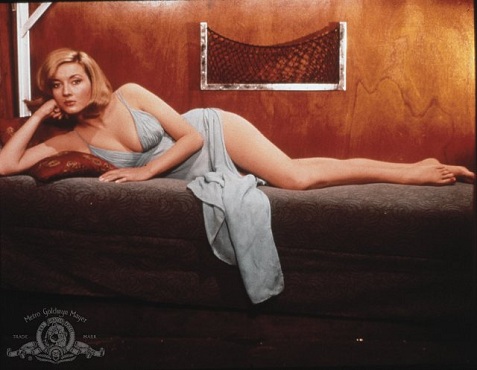
Friends and Colleagues
M (Bernard Lee) and Moneypenny (Louise Maxwell) are both back for more banter. By this point, the pattern is being set for the characters’ fun but exposition-heavy scenes that would be a mainstay of the series for decades to come. The scenes are always somewhat the same: It’s Moneypenny’s job to provide some flirtatious silliness and M’s job to make sure the frivolity doesn’t eat up too much screen time. The business with Bond throwing his seemingly unworn bowler hat on the hat stand makes a return as well. However, “From Russia with Love” gives us two additions to Bond’s onscreen colleagues, each in their own way legendary.
Ali Kerim Bey — Jovially ironic and cheerfully vice-ridden, the Istanbul station chief has produced enough sons with a variety of women to populate the entire Turkish branch of MI6; he is clearly a man after 007’s own heart. Indeed, in the movie he seems to be one of the very rare male characters who could be described as an actual friend of Bond. (In the novel, Bond’s ongoing admiration for Bey reads to modern eyes like an out-and-out man-crush.) The character was reportedly inspired by Ali Nâzım Kalkavan, an Oxford-educated Turkish shipowner connected to the English film industry whom Ian Fleming met while researching the novel.
Film acting great Pedro Armendáriz might have hailed from parts significantly west of Istanbul, but he had just the right playful, larger-than-life presence to embody Ali Kerim Bey. As a handsome youth, the U.S.-educated Armendáriz had stumbled into a career as major star in his native Mexico. He also appeared in a number of north-of-the-border films, and it was none other than the legendary director John Ford who suggested the half-Anglo Armendáriz to Terrence Young for the part of the half-English Kerim Bey.
The actor had costarred with his good friend, John Wayne, in Howard Hughes’ notorious epic, “The Conqueror” — a film many believe to be “cursed” by radiation from early atom bomb tests. Whatever the cause of his illness, Armendáriz, a smoker, learned just before production began that he was suffering from terminal cancer. He decided to make the film, perhaps mainly to help support his family after his death. Reports about the precise sequence of events differ, but it appears he returned to Los Angeles and the UCLA Medical Center after his illness grew too debilitating, where he killed himself with a bullet to the heart. Terrence Young used doubles to complete the film. Armendáriz’s son, actor Pedro Armendáriz Jr., would appear in 1989’s “License to Kill.”
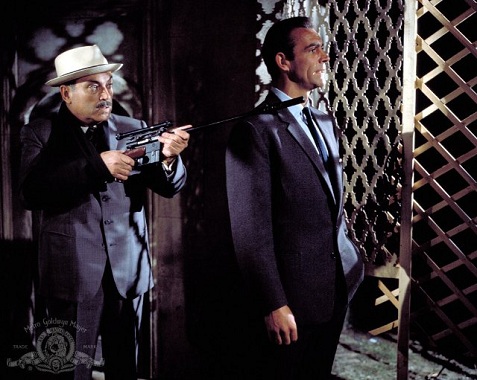
Major Boothroyd — The armorer, eventually known simply as Q of Q Branch, actually did appear in “Dr. No,” but don’t feel bad if you missed blink-and-you’ll-miss-him original Boothroyd/Q Peter Burton; we did too. Unable to return because of a prior commitment, veteran working actor Desmond Llewellyn replaced Burton in the second Bond film. Though Llewellyn’s debut lacks any humorous by-play, the production team apparently realized they had something with the droll Welshman. Things would be different next time.
The Nemeses
“From Russia With Love” is distinguished by a group of genuinely fascinating bad guys who were, in turn, played by some of the most impressive performers in the Bond cannon.
Ernst Stavro Blofeld — The cat loving, human hating, head of SPECTRE makes his first film appearance here, though we won’t be seeing his face until “You Only Live Twice.” The hand which pets the pretty white kitty is provided by Anthony Dawson, who portrayed the unfortunate Prof. Dent in “Dr. No.” The voice is by Austrian actor Erich Pohlmann. Perhaps partially because of ongoing legal wrangling over “Thunderball,” which first introduced SPECTRE in the Bond novels, the credits only list his name as “?”
Kronsteen — The brilliant chess player who develops the original plan is able to defeat a chess opponent in a matter of a minute, even while risking death by not immediately answering SPECTRE’s call. Nevertheless, he eventually falls prey to Mr. Blofeld’s very strict personnel policies. Kronsteen was portrayed by Vladek Sheybal, a Polish-born newcomer chosen for his memorable face and performing style. He would remain a consistently interesting and watchable character actor in English productions until his death in 1992.
Rosa Klebb — In the novel, the toadish Klebb is the depraved and, naturally, lesbian operative of the Soviet SMERSH. In the movie, she has defected to SPECTRE, but that fact has been kept hidden by the Kremlin, making her just the person to deceive the communist but otherwise innocent Tatiana. With the poison tipped knife in her shoe (SPECTRE standard equipment, it seems), Klebb is a figure of pure bile, yet believably human.
What many Bond fans don’t know about Rosa Klebb is that the woman who played her, Lotte Lenya, would be an important figure in world culture if she had never appeared in a single film. A world famous cabaret performer and the wife and muse of German-emigre theater composer Kurt Weil, you can hear Lenya being name-checked in the classic Bobby Darin and Louis Armstrong recordings of Weil’s best known melody, “Mack the Knife.” Her other notable film roles include an Oscar-nominated turn in 1961’s “The Roman Spring of Mrs. Stone” and as a Klebb-like sadist of a masseuse who humorously tortures football star Burt Reynolds in 1977’s “Semi-Tough.”

Donald “Red” Grant — The utterly cold-blooded killer who meets his end after one of the famous hand-to-hand battles in movie history is a pure psychopath or perhaps, as we’re told, a homicidal paranoiac. The novel goes into some detail describing his apparently inborn propensity for murder and cruelty, but from the pre-credit sequence on, the movie makes that clear enough. The film subtly establishes the emptiness inside Grant by making him silent throughout the film as he shadows Bond and helps keep him alive long enough for SPECTRE’s evil plan to take hold. He finally speaks, but not as himself, when he meets Bond under the guise of a recently deceased MI6 contact. As in the novel, his repeated use of the English boarding school expression “old man” becomes a bit of a tip-off to Bond. He also conveniently explains the entire plan to Bond before trying to kill him, which is always helpful behavior in a villain.
Young Bondians are often astonished to learn that the gigantic, strapping, red-haired Grant is the very same human being who portrayed the scrappy, not-quite-gigantic brunette seaman, Quint, in “Jaws.” Shaw was clearly one of the better actors tasked with killing James Bond and Grant was far from his only memorable movie bad guy. He was the chillingly ruthless Doyle Lonigan of “The Sting,” the uncompromising subway hijacker, Mr. Blue, in the original 1974 “The Taking of Pelham One Two Three” and the most imposing Sheriff of Nottingham ever opposite Sean Connery’s middle-aged Robin Hood in “Robin and Marion.” Between those films and his Bond gig, Shaw won an Oscar for his portrayal of King Henry VIII in 1967’s “A Man for All Seasons.” The master thespian was also a novelist and playwright, perhaps best known today for the play “The Man in the Glass Booth,” inspired by the trial of Nazi war criminal Adolph Eichmann. He died while still at the height of his movie fame in 1978.
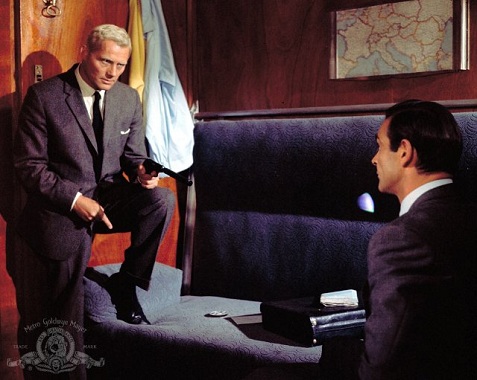
Lesser Bond Baddies
With such a large and notable cadre of bad guys, you’d think we’d have the notable bad guys covered. However, we should give at least a nod to the Soviet paid Bulgar assassin Krilencu, whom Kerim Bay does away with as he is looking out of a poster for an upcoming Bob Hope/Anita Eckberg comedy. The assassin was played by the late Hungarian-born actor and stunt man, Fred Haggerty.
License to kill
After the fairly wanton killing of Prof. Dent last time around, Bond is on slightly better behavior. He does, however, offer to perform the cold-blooded assassination of Krilencu. Instead, Kerim Bey performs the honors in what is arguably a case of “all’s fair” in the war between the two men. We suppose you could make a case 007 doesn’t actually have to garrote Red Grant to death at the end of the fight in the train, but we’re willing to chalk that one up as reasonably pure self-defense and some justifiable anger for messing up an enjoyable evening.
The gadgets
The really elaborate doodads will be making their debut in “Goldfinger.” However, Boothroyd/Q does give Bond an extremely nifty and useful briefcase which the spy describes as a “nasty little Christmas present.” It features a folding AR-7 sniper rifle, hidden rounds of ammunition, a throwing knife that pops out of the side, an innocent looking can of talcum powder that holds a tear-gas canister, and hiding places for 50 gold sovereigns, always handy for potentially life-saving bribes. Believe it or not, with enough cash you can purchase a suitcase claiming to be the actual Bond case from the firm of Swaine Adeney Brigg. We’re wondering if those sovereigns would cover the cost.
The exotic locales
After the success of “Dr. No,” the famously thrifty Cubby Broccoli was prepared to spend a bit more on travel-related expenses. However, while many sequences were filmed in Istanbul, Venice and elsewhere, a surprising number of sequences were actually shot in Sean Connery’s native Scotland and at London’s Pinewood Studios. Again, director of photography Ted Moore does a fantastic job of creating a sumptuous look on a relatively lowish budget, give or take some of those inevitable obvious early sixties back-projection shots.
The outrageous villain’s lair chess room
Befitting the reputation of “From Russia with Love” as the most straightforward Bond film made in the 20th century, the sets are, on the whole, a bit more restrained than in future entries. However, even with legendary production designer Ken Adam taking a break from the series, they range from beautiful to spectacular. Syd Cain had worked in an accidentally uncredited capacity as the art director on “Dr. No” — rather than expensively redo the credits, Cubby Broccoli gave Cain a solid gold pen instead — and he was more than up to the task of production design.
Still, the villain’s lairs get upstaged this time. Yes, there is Blofeld’s rather lavish office on his yacht, but it’s a relatively restrained affair. Even his aquarium is normal sized and only houses three ordinary Siamese fighting fish. The oft-spoofed SPECTRE Island training facility, with its live shooting galleries and deadly dojos, is suspiciously similar to an elaborate multipurpose silent film set used to comic effect in, believe or not, “Singin’ in the Rain.” Easily the most spectacular set this time around is the room where Kronsteen wins his chess game. The huge Venetian frescoes that adorn the room remind us of where we are and spice up what might have been a somewhat dry scene.
The Opening
By the early sixties, teasers were a common technique used to persuade the ever-growing TV audience to sit through commercials, and so it seemed like a natural way to “hook” a movie audience right away. Producer Harry Saltzman had come up with the idea that the second film should open with the apparent death of James Bond. Furthermore, Stanley Kubrick’s Oscar-winning film of “Spartacus,” had given the filmmakers the idea of an extremely rigorous SPECTRE instructional camp where death was the equivalent of a non-passing grade.
Thus, the thrilling James Bond movie pre-credit sequence, which eventually became as much a part of the series as the girls and the guns, was born. This time, we meet psychopathic, eerily silent professional killer Donald “Red” Grant who encounters the apparent Mr. Bond in the spectacular garden of an English mansion and dispatches him with the help of some garroting wire secreted in his watch. We quickly realize the entire thing is a very deadly war game when one of Grant’s superiors pulls a mask off the body, revealing a mustachioed man who should have considered the dubious employment practices of SPECTRE.
The Credits
Like production designer Ken Adam, “Dr. No.” credit designer Maurice Binder was not on board for “From Russia with Love.” He was very ably replaced by the imaginative Robert Brownjohn, who borrowed an old avant garde film technique and projected the credits on and around the bodies of dancer, setting the sexy, male-gaze friendly tone of the production. Brownjohn would employ a variation of the process in his next and final Bond outing, “Goldfinger.”
Action Highlights
With a bigger budget came more frequent and more elaborate action sequences. Undoubtedly the most famous action scene in “From Russia with Love” is the climactic fight in Bond’s private room on the Orient express. The fight, rather brutal by the standards of its time, wowed audiences but it took a lot work as the use of stunt men was limited, allowing for a greater degree of realism than audiences were used to. The scene must have given Broccoli and Saltzman at least a touch of indigestion and it is supposed to have taken some three weeks to choreograph and film — enough time to shoot an entire movie. The effort certainly paid off, however. A later boat chase was more even more dangerous to film, though perhaps less effective for jaded modern viewers.
The Music
John Barry might not have gotten the credit he felt he deserved for the iconic James Bond theme he conducted and arranged for “Dr. No.” Of course, it was Barry, and not credited composer Monty Norman, who was asked back to score the second Bond film. Even so, the extremely talented 30 year-old still had to play second-fiddle when it came to the theme song. Since Barry had yet to write a pop hit, the producers instead turned to songwriter Lionel Bart, who had just made a smash in London and on Broadway with his songs for “Oliver!”
In our opinion, Bart is not quite in the same musical league as Barry (we’re not big fans of “Oliver!” either) and his “From Russia with Love” is not one of our very favorite Bond melodies. So, the film wisely leads off with an instrumental rendition arranged and conducted by Barry, leaving a vocal rendition by Matt Monro for later. Barry adds elements of quasi-classical dramatic film music and jazz, transforming Bart’s somewhat bland melody into an exciting composition that properly sets the tone of romance and adventure.
Perhaps trying to get a bit of his own back, Barry also created his own “007 Theme.” While the original Bond theme emphasizes danger, violence and mystery, Barry’s new melody, which would become a staple in Bond films for decades to come, strikes a playfully martial note. It sounds almost as if it might have been composed for a classic Hollywood adventure along the lines of “Gunga Din” or “Beau Geste.”
The one-liners
The enjoyably groan-inducing Bondian witticisms are, to the relief of some, few here. However, after Tatiana saves Bond from the poison-tipped hidden shoe-knife of Rosa Klebb, Bond says of the late Miss Klebb that “She had her kicks.”
At another point, Bond risks a movie-related in-joke, which has become very “in” indeed. After shooting down a SPECTRE helicopter, he quips, “Looks like one of their aircraft is missing.” This is a reference to “One of Our Aircraft is Missing,” a once popular World War II-era propaganda film from cinephile favorites Michael Powell and Emeric Pressburger (“The Red Shoes”). Sadly, the film in question fell into public domain and has rarely been seen in any but the most battered prints for decades.
The cocktails and beverages
There is some booze, but no actual cocktails this time. Bond — who actually seems to prefer bourbon over martinis in the novels — seems to be in more of a caffeinated mode. He orders his super-strong Turkish coffee “medium sweet” while hanging with Ali Kerim Bay, and later requests from room service that his morning wake-up beverage be “very black.” Nevertheless, Bond and his new buddy, Bey, drink an allegedly “filthy” Turkish liquor called raki at the Gypsy camp.
Later, Bond is disturbed when Red Grant, masquerading as Bond’s contact, orders a red wine with his fish dinner. An especially tragic faux pas as it was Grant’s last meal. (Actually, oenophiles inform us you can pair red wine with fish as long as you know what you’re doing. Grant clearly didn’t know what he was doing.)
Random facts
— The poster that soon-to-be deceased assassin, Krilencu, is looking out of shortly before his last breath is for the Bob Hope vehicle, “Call Me Bwana.” Not surprisingly, the film happened to be another movie produced by Cubby Broccoli and Harry Saltzman’s EON Productions. If you’re going to give a movie free advertising, it really should be your own.
— “From Russia With Love is one of numerous thrillers to include trains in general and the Orient Express in particular. A few of the films Terrence Young and company might have had in mind as they were shooting the train sequence were Josef von Sternberg’s “Shanghai Express,” 1934’s “Orient Express,” Alfred Hitchcock’s “North by Northwest” and “The Lady Vanishes,” as well as Carol Reed’s “Night Train to Munich,” which had a somewhat Bondian-leading man portrayed by Rex Harrison. Although Agatha Christie’s novel, Murder on the Orient Express was first published in 1934, there was no film version until America’s Sidney Lumet made an Oscar winning film version, costarring Sean Connery, in 1974.
The Romantic Ending
Fans who saw both “From Russia with Love” and “Dr. No” might have spotted the beginning of a pattern. Bond and Honey Ryder (Ursula Andress) wrap up in the first movie engaged in some heavy movie-style petting in a small boat. Bond and Tatiana end the film engaged in some goodness-knows-what in a Venetian gondola. Whatever they’re doing may or may not be legal under Italian law, but Bond probably has a license for that as well.
“James Bond Will Return”
One last tradition began in “From Russia with Love” and it was the promise of another 007 adventure before the end credits. In keeping with the tendency of films of that era to get a bit cute with the closing “The End” title card, here it’s followed by “Not Quite the End” and then, “James Bond will return in the next Ian Fleming thriller . . . ‘Goldfinger.'” And so he did.
Related Posts
You can follow us on Twitter and Facebook for content updates. Also, sign up for our email list for weekly updates and check us out on Google+ as well.
Posted in: Entertainment, Movies
Tags: 007, 007 50th anniversary, 007 films, 007 gadgets, 007 movies, 007 One by One, 007 one-liners, 007 villains, Albert R. "Cubby" Broccoli, Ali Kerim Bey, Aliza Gur, Anthony Dawson, beautiful Bond women, Bernard Lee, best Bond movie moments, Bond babes, Bond films, Bond gadgets, Bond girls, Bond movies, Bond one by one, Bond villains, Daniela Bianchi, Desmond Llewellyn, Donald "Red" Grant, Ernst Stavro Blofeld, Eunice Gayson, From Russia With Love, From Russia with Love movie, Harry Saltzman, iconic James Bond moments, Istanbul, James Bond, James Bond 007, James Bond 50th anniversary, James Bond actresses, James Bond babes, James Bond blog, James Bond cars, James Bond craze, James Bond drinks, James Bond franchise, James Bond girls, James Bond hookups, James Bond movies, James Bond music, James Bond one-liners, James Bond romantic endings, James Bond villains, James Bond violence, John F. Kennedy, Kronsteen, license to kill, Lotte Lenya, Louise Maxwell, Major Boothroyd, Martine Beswick, Maurice Binder, memorable Bond scenes, Moneypenny, movie one-liners, Pedro Armendáriz, Robert Brownjohn, Robert Shaw, Rosa Klebb, SPECTRE, Sylvia Trench, Tatiana Romanova, Turkey, Vida and Zora, Vladek Sheybal




